When you explore the diverse textures of electric guitar tone, you will undoubtedly encounter two fundamental effects which are often in debate: Distortion vs Overdrive. These effects pedals are staples for guitarists across various music genres, having shaped the sound of countless iconic records. Distortion and overdrive are often mentioned in the same breath, yet they differ in both their technical characteristics and the sonic landscapes they create. Understanding their disparities is key to harnessing their full potential in your music.
Distortion occurs when the signal from your guitar is amplified to a level beyond the amplifier’s capacity, causing waveform clipping and a rich, aggressive sound that sustains notes longer. This effect is prevalent in heavier music genres like rock and metal. On the other hand, Overdrive simulates the warm, natural saturation that occurs when a tube amplifier is driven hard, without pushing it into full clipping. This results in a dynamic and expressive sound that retains more of the guitar’s natural timbre, favored in blues and classic rock.
The choice between using distortion or overdrive can greatly influence your tonal output and define the character of your music. Whether aiming for a gritty, in-your-face riff or a smooth, bluesy lead, your preference will depend on the style of music you’re playing and the mood you desire to convey. In the realm of guitar tone, these effects are not just tools; they’re the building blocks of your musical expression.
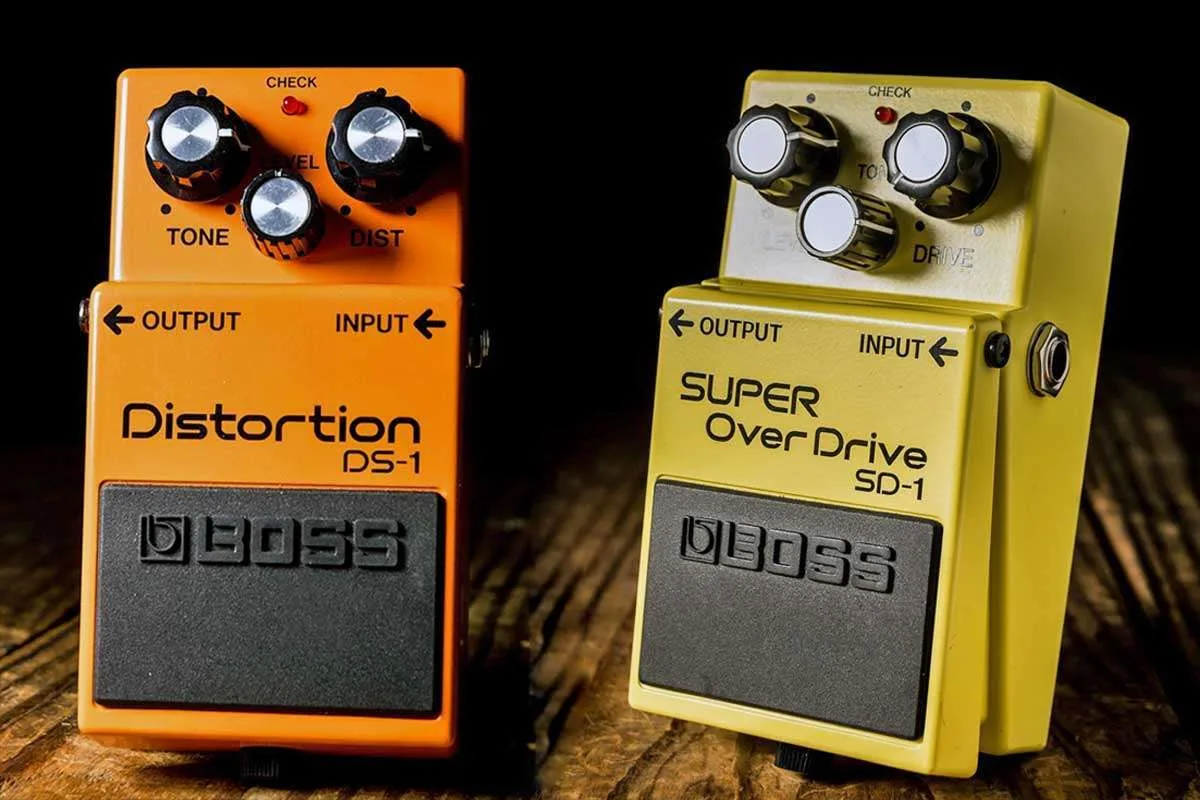
Fundamentals of Distortion and Overdrive
Distortion and overdrive are effects used to alter the sound of electric guitars and other instruments by modifying the shape of the signal waveform, resulting in changes in gain, volume, and overall tone characteristics.
Related: The History of Guitar Effects Pedals
Conceptual Differences
When you consider overdrive, think of it as a warm, natural amplification of your signal, pushing tubes in an amp to create a smooth, reactive sound. Overdrive adds slight clipping and compression, mimicking the effect of an amplifier pushed just to the edge of breakup. Distortion, by contrast, significantly increases the gain to create a more intense, aggressive and ‘saturated’ tone that sustains longer than overdrive and is less dynamic in response to your playing.
Signal Clipping
Clipping occurs when the signal exceeds the maximum limit of an amplifier’s capability, cutting off the tops and bottoms of the waveform. Soft clipping, as found in overdrive, gently rounds off these edges, allowing more of the original signal through. Distortion involves hard clipping, which sharply truncates the waveform for a more pronounced effect. This type of clipping results in a higher level of harmonic generation, contributing to a rich, complex sound.
Gain and Volume Dynamics
Gain directly influences the amount of distortion or overdrive. High gain settings increase distortion with more pronounced clipping and harmonic complexity. In contrast, overdrive relies on moderate gain settings for a lighter touch of saturation. It’s essential to distinguish between gain and volume: gain controls the intensity of the effect, while volume adjusts the output level after the signal has been processed.
Waveform Alterations
The waveform is the visual representation of your signal. Overdrive and distortion both alter this waveform, but in distinct ways. Overdrive preserves the signal’s overall shape but adds slight asymmetrical waveform alterations to produce a warmer tone. Distortion, however, changes the waveform more drastically, often creating a symmetrical alteration that results in a heavier, more aggressive sound. Fuzz takes this even further by creating an almost square wave, which is why it’s often considered the extreme end of distortion.
Electronic Characteristics
Understanding the electronic characteristics of guitar pedals is essential for grasping how they shape the sound. Circuit design, clipping types, and the role of active components like tubes and transistors define the core of distortion and overdrive effects.
Circuit Design
Your guitar signal is manipulated by the circuitry within an overdrive or distortion pedal. Overdrive circuits traditionally use a soft clipping approach to subtly clip the waveform, which tends to preserve the dynamics and the original tone of the instrument. Distortion pedals, on the other hand, are designed to produce hard clipping, resulting in a more aggressive and compressed sound. In both cases, the circuits often incorporate diodes in the signal path to achieve these effects.
Types of Clipping
Clipping is a form of waveform alteration that occurs when a signal exceeds the threshold of what a circuit can handle. Soft clipping gradually limits the peaks of the waveform, creating a warm and subtle overdrive characteristic. It’s like rounding off the sharp edges of your signal. In contrast, hard clipping slices off these peaks abruptly, which creates a more intense and often buzzy distortion.
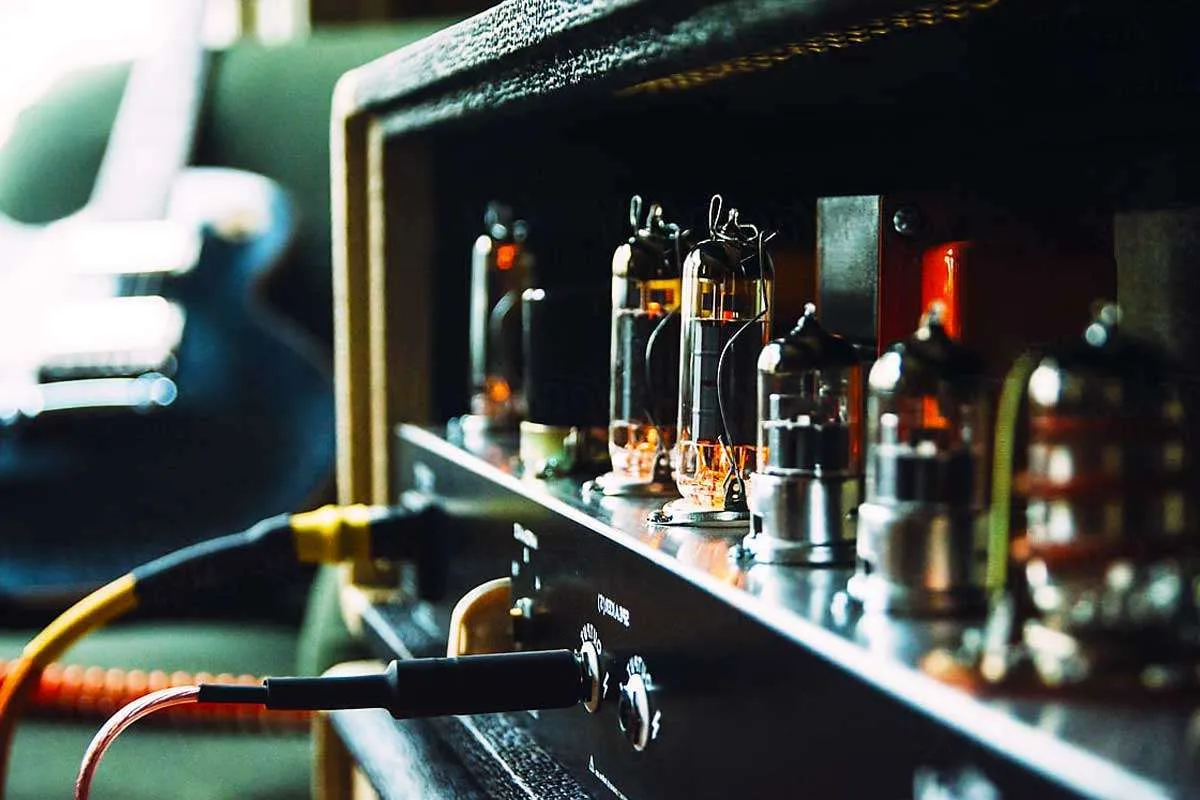
Role of Tubes and Transistors
The heart of an amplifier’s personality often comes down to its active components: tubes (or vacuum tubes) and transistors. Tubes are known for their desirable warm, rounded tones produced by soft clipping, and are considered a quintessential component for vintage amp designs. Transistors, which are found in solid-state devices, offer a more consistent and sharp response, lending themselves to the precision needed for hard clipping. Both play a crucial role in the resulting sound, with the choice of component significantly affecting the harmonics and saturation of the guitar signal.
Hardware Variants
When choosing between overdrive and distortion, it’s crucial to consider the hardware options available. Each type of pedal offers a distinct sound and interacts with your guitar and amplifier in different ways.
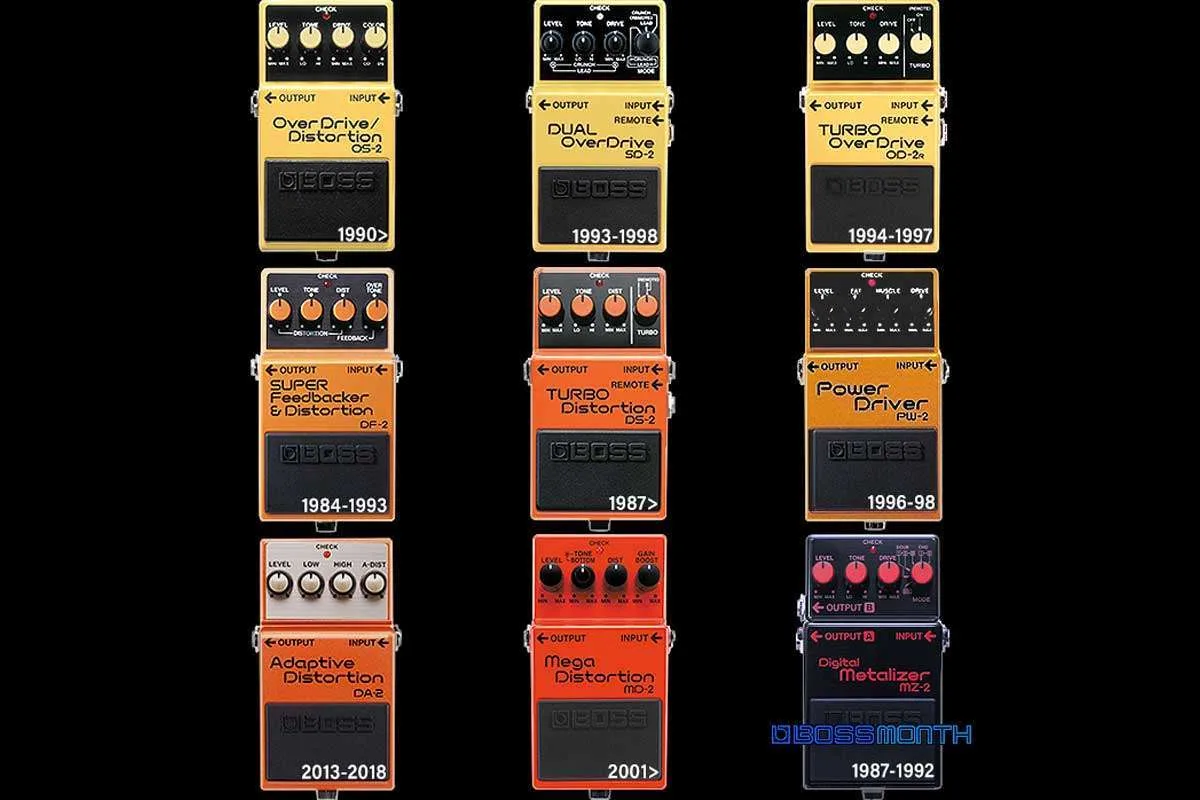
Overdrive Pedals
Overdrive pedals are designed to simulate the warm, natural clipping of a tube amp pushed to its limits. They offer a smoother, more responsive gain that integrates seamlessly with your playing dynamics. A popular example is the Ibanez Tube Screamer, known for its creamy mid-range boost and subtle overdrive. Overdrive pedals may provide a range of sounds from a gentle break-up to a thick, saturated tone, perfect for blues or rock.
- Key Features:
- Smooth, natural drive
- Dynamic response
- Warmer tone
Distortion Pedals
Distortion pedals, meanwhile, produce a more aggressive type of gain. They create a harder clipping and sustain than overdrive pedals, suitable for genres that require a heavier, more consistent distortion. The Boss DS-1 is a quintessential distortion pedal that is famed for its affordability and its cutting, mid-scooped sound which has made it a staple on many pedalboards.
- Key Features:
- Harder clipping and pronounced sustain
- Central in heavier music genres
- Can significantly alter the core tone
Multi-Effects Units
Multi-effects units are versatile pieces of hardware that can include both overdrive and distortion effects, among many others. These units offer the convenience of multiple guitar effects in one, ranging from modulation to time-based effects, and are ideal for players looking to experiment with a wide palette of tones without the need for multiple individual pedals. They might be more complex to use but can be invaluable for crafting unique soundscapes.
- Key Features:
- A broad array of effects
- Programmability for easy switching
- A cost-effective solution for a diverse range of sounds
By understanding these hardware variants, you can make a more informed decision about which type of pedal will best suit your music and playing style.
Impact on Tone and Harmonics
When you manipulate a guitar’s signal with distortion or overdrive, you’re not just changing the volume—you’re reshaping the entire sound profile. This tweaking has direct implications on the harmonic content, sustain, and the timbre and texture of the notes you play.
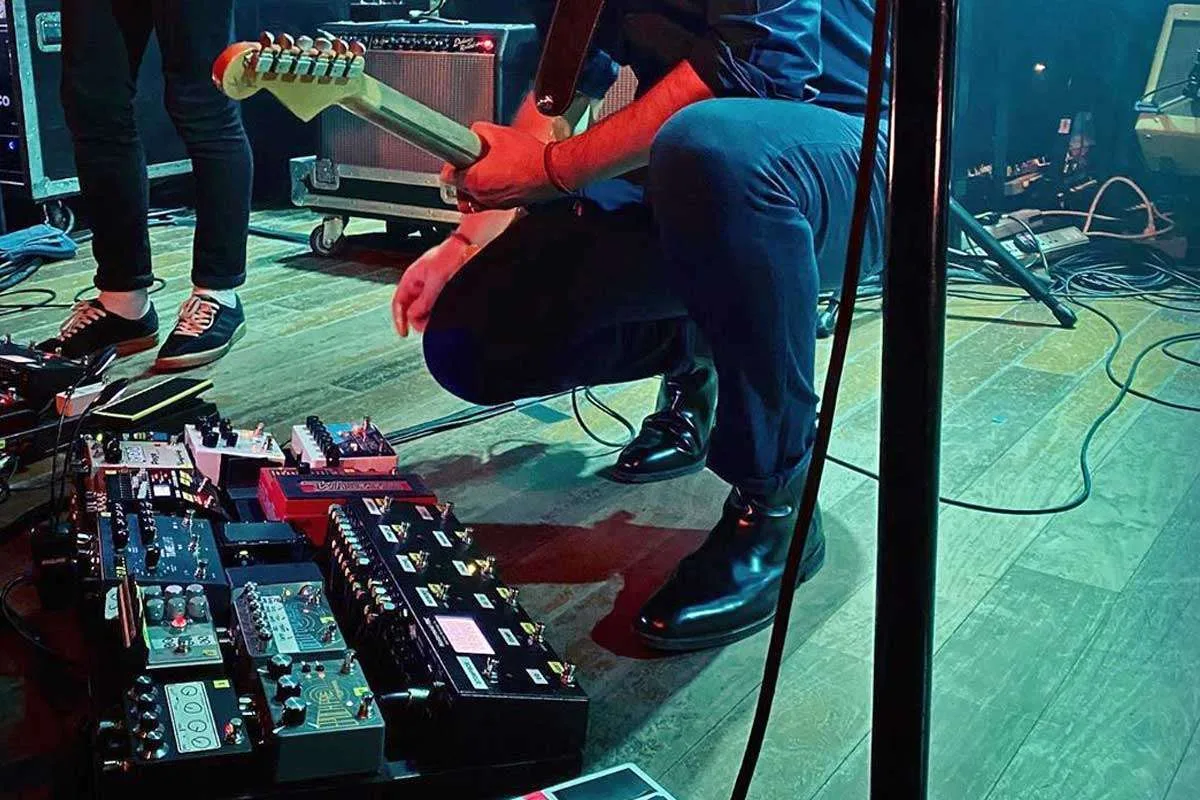
Harmonic Content
Distortion, by its nature, introduces additional harmonics to your guitar tones. A study highlights how harmonic overtones contribute to the perception of “sharpness” and “brightness” in distorted guitar timbres. These are not just perceived as louder; they form a more complex sonic fingerprint. In contrast, overdrive tends to emphasize odd-order harmonics, subtly enriching the sound rather than radically altering it.
- Distortion: Creates a denser spectrum of harmonics, which can significantly alter the fundamental tone.
- Overdrive: Boosts the existing harmonic structure, often resulting in a warmer, more natural amplification of the guitar’s voice.
Sustain Enhancement
The sustain of a guitar note is significantly lengthened when you employ overdrive or distortion effects. By compressing the signal and adding gain, these effects allow notes to ring out longer than they would when played clean. The physics-informed models of distortion and overdrive suggested in the Stanford research show how these effects maintain the amplitude of the sound over a longer period.
- Distortion/Overdrive: Increases the duration a note maintains its level before fading out.
- Clean Tone: Exhibits a faster decay of sound amplitude, leading to shorter note durations.
Timbre and Texture
The timbre—essentially the character of the sound—and texture are deeply influenced by distortion and overdrive. Each pedal and effect type etches its signature onto your guitar’s tone. One study noted how distortion levels and structural complexity affect both the acoustic features and subjective pleasantness of chords. Your guitar will sound drastically different depending on whether you choose a thick, heavy distortion or a light, bluesy overdrive.
- Distortion: Introduces a gritty, aggressive quality to your guitar’s timbre.
- Overdrive: Provides a smoother texture, accentuating certain frequencies without overwhelming the original character of the instrument.
Usage and Application
Understanding the use of distortion vs overdrive can drastically impact your sound. These effects are not just about making your guitar louder; they shape the very character of your notes and musical phrases.
Genres and Styles
In the realm of music styles, overdrive is often associated with blues and rock genres, providing a warm, natural, and slightly gritty amplification to the guitar’s tone. It simulates the sound of a tube amp being pushed to its limits, crucial for that classic bluesy warmth. On the other hand, distortion is key to the heavy metal and hard rock sound, serving up a more intense and sustained level of grit. It adds aggressiveness to the sound, fitting for high-energy, impactful tracks.
Guitar Solos and Riffs
For your guitar solos and riffs, overdrive allows every note to sing with sustain and a subtle edge, ideal for emotional blues solos or dynamic rock passages. Distortion, however, provides a powerful, consistent attack that can make solos cut through even the densest mix and deliver that quintessential heavy metal energy and complexity.
Recording and Live Performance
In a recording environment, overdrive can add richness and depth to your tracks, while distortion can introduce a level of ferocity and excitement. During live performances, overdrive may be used to deliver a relatable and familiar rock sound that audiences connect with, whereas, for genres like hard rock or heavy metal, distortion ramps up the intensity and spectacle of the performance, driving the energy of both band and crowd.
Popular Pedal Models
In exploring the landscape of guitar effects, you’ll encounter stalwarts that have shaped the sound of music. These pedals are iconic, with distinct sonic characteristics and a legacy of use by renowned guitarists.
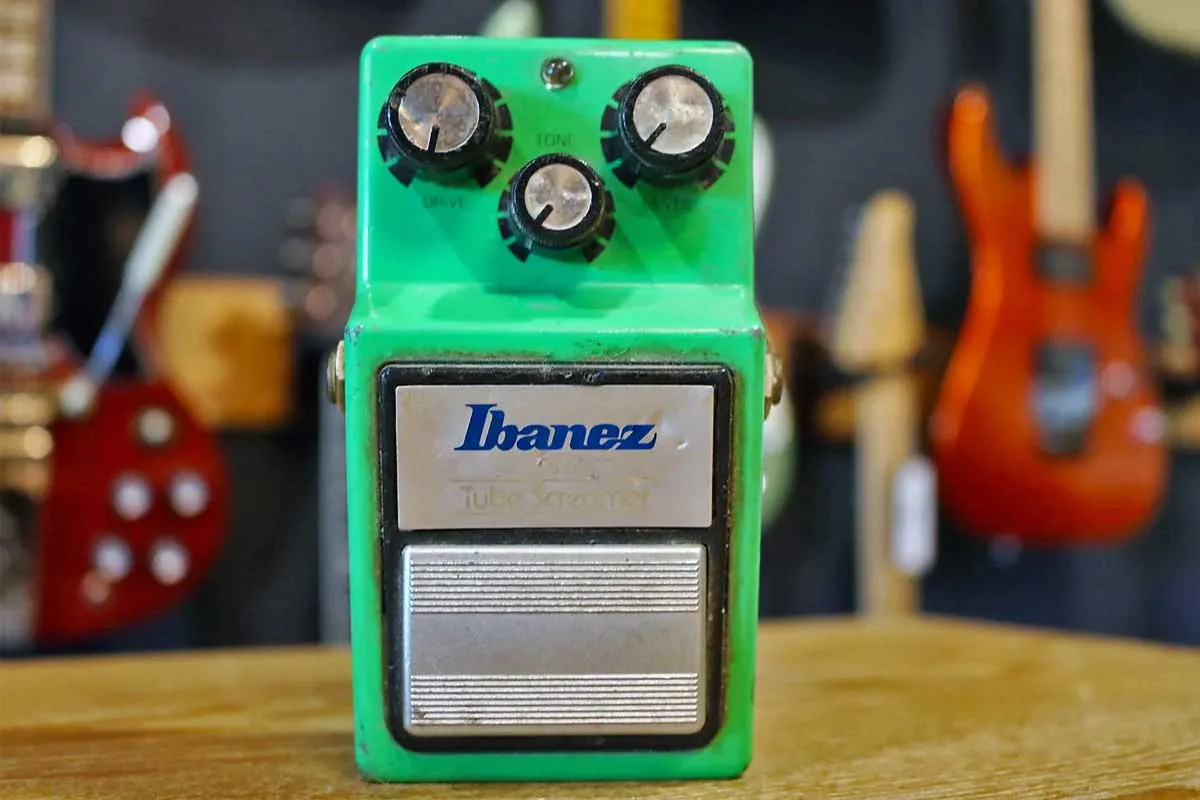
Ibanez Tube Screamer
The Ibanez Tube Screamer is a legend in its own right. Renowned for its warm, creamy overdrive, this pedal, particularly the TS9 model, has been a mainstay on many professional boards. The Tube Screamer is beloved for its ability to enhance a tube amp’s natural distortion while preserving the guitar’s tone.
Boss DS-1 Distortion
Up next is the Boss DS-1 Distortion, a pedal known for its robust build and aggressive distortion. A fixture since 1978, it delivers a hard-edged attack and a smooth sustain, making it a favorite for various music genres from rock to metal. This pedal is a workhorse that provides reliable performance, whether you’re practicing at home or on a live stage.
MXR Timmy
Lastly, the MXR Timmy is a newer addition to the pantheon but has quickly garnered attention for its transparency and responsiveness. It grants you the ability to shape your sound from subtle enhancements to gritty drive while maintaining the integrity of your guitar’s unique voice. Perfect for players who want nuanced overdrive, the MXR Timmy is a versatile tool in your sonic arsenal.
Techniques and Expressiveness
In rock and metal music, your use of distortion vs overdrive can dramatically affect the techniques you apply and the expressiveness of your playing. Mastery over these effects allows for nuanced musical expression and dynamic performance.
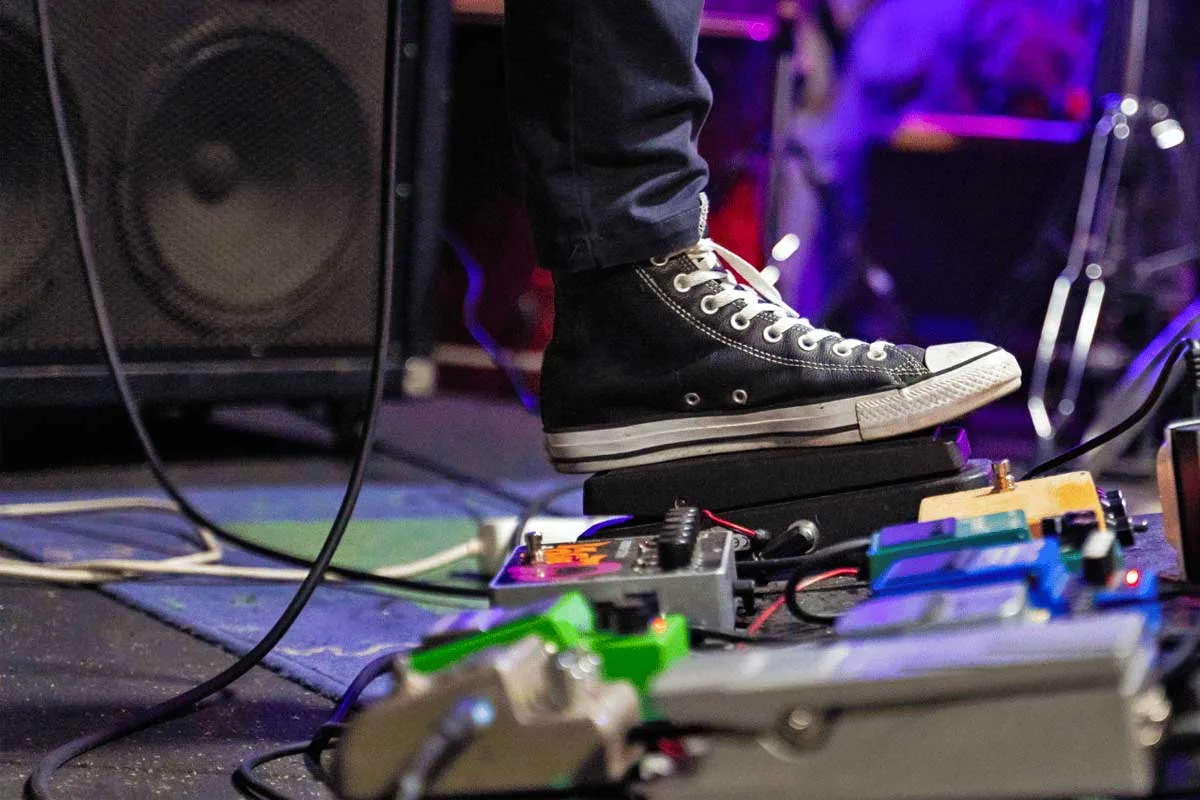
Volume and Intensity Control
Employing distortion can enhance the intensity and volume of your guitar playing. By adjusting the gain on your effects pedal or amplifier, you modulate the degree of distortion, which subsequently allows for either subtle warmth or aggressive crunch. For instance, when you set out to increase volume during a solo, a bit of overdrive can add sustain while keeping the sound crisp.
Achieving Desired Tonal Characteristics
Understanding the type of tonal characteristics while using distortion and overdrive is essential for shaping your desired sound. You might use overdrive to achieve a bluesy or vintage rock timbre, as it often preserves the guitar’s natural dynamics. On the other hand, distortion can generate a thicker, more uniform sound suitable for modern rock and heavy metal.
Dynamics and Versatility
Distortion and overdrive are not just static effects—they respond to your playing, offering a rich palette of dynamics. Varying your picking strength or using the volume knob on your guitar can yield a wide range of expression, from subtle coloration to intense, saturated tones. This dynamic versatility means that with a nuanced approach, your playing can move seamlessly between whisper-soft passages and thunderous crescendos.
Advanced Considerations
In the realm of guitar effects, delving into advanced techniques can profoundly influence your tone. Understanding the nuances of pedal stacking, noise management, and amp settings is crucial to tailor a sound that cuts through with precision and clarity.
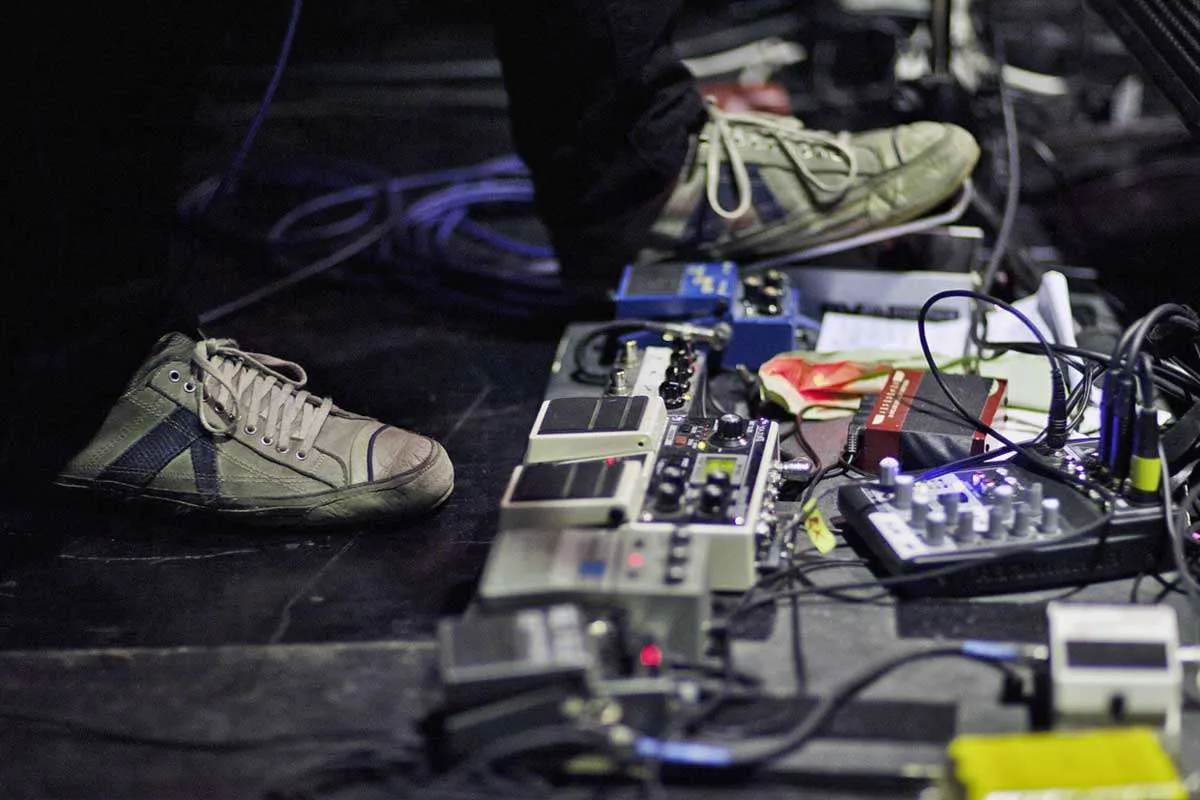
Pedal Stacking
When it comes to pedal stacking, the order in which you place your pedals can greatly affect the overall sound. For example, using a boost pedal before an overdrive can significantly increase the amount of distortion. Conversely, placing it after can raise the volume without affecting the drive too much. Experiment with the placement to find the perfect blend of drive effects.
- Boost Pedal → Overdrive: Increases distortion
- Overdrive → Boost Pedal: Boosts volume
Noise Management
Noise can be the bane of a high-gain signal chain. Introducing a noise gate early in the chain helps to clean up the signal by cutting off the sound once it falls below a set threshold. For enhanced control, consider setting the level control on your pedals to manage the noise floor while preserving the integrity of your tone.
Noise Gate Settings:
- Threshold: Set to the point where noise ceases
- Decay: Adjust for natural fade-out of notes
Amp Settings and Modifications
Finally, your amp’s settings and any modifications carry weight in achieving the desired overdrive or distortion sound. Balance your amp’s natural distortion with your pedal’s output for a coherent sound. Remember, using a clean boost can add fullness to the tone without introducing additional drive, thereby maintaining the character of your amp’s overdrive.
Amp Setting Tips:
- Gain: Adjust according to desired distortion levels
- EQ: Tailor to complement your pedal tone
- Master Volume: Set based on overall output needs
